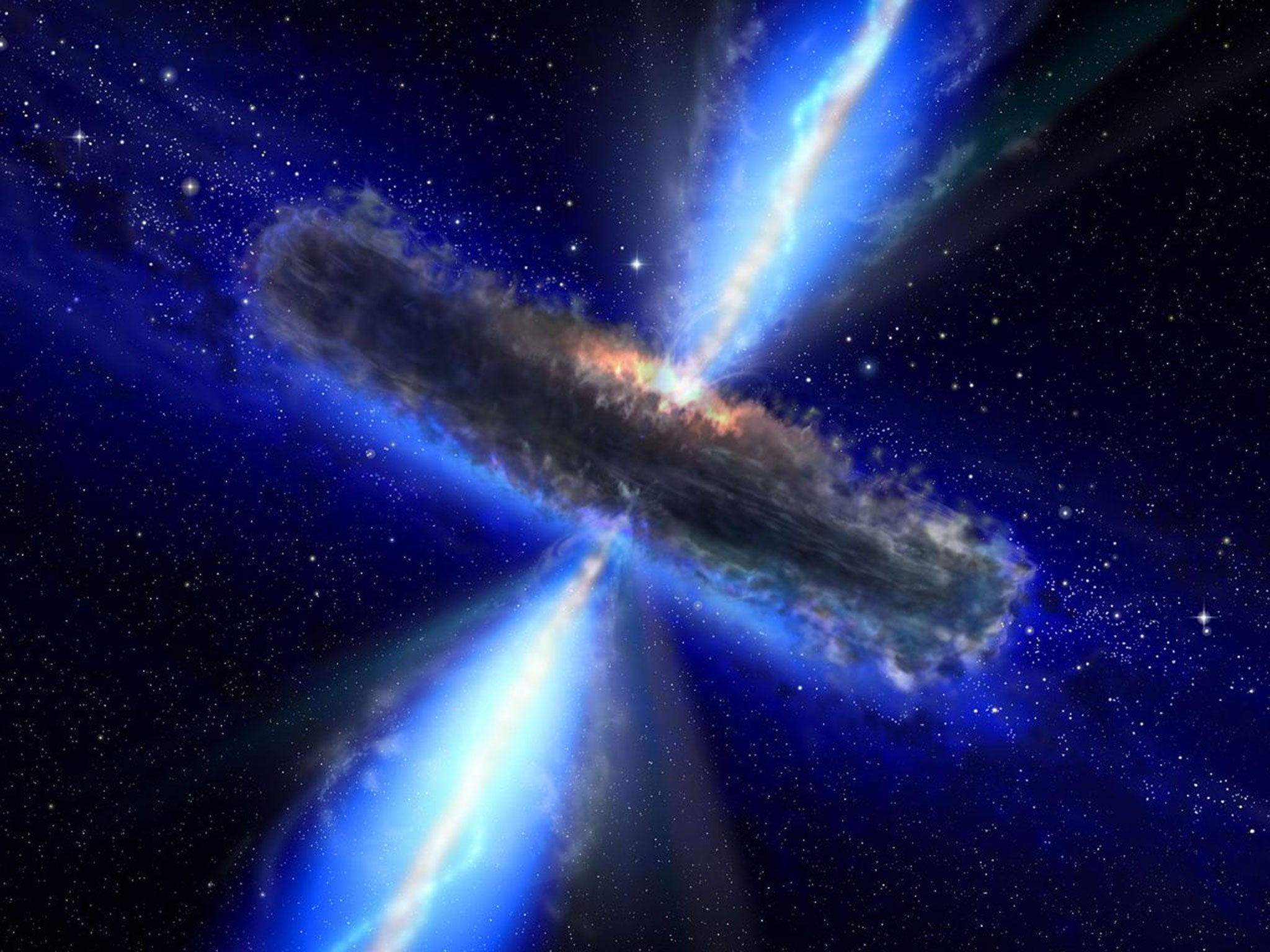British astronomers discover five supermassive black holes
The cosmic masses chew up everything that comes close to them

Your support helps us to tell the story
From reproductive rights to climate change to Big Tech, The Independent is on the ground when the story is developing. Whether it's investigating the financials of Elon Musk's pro-Trump PAC or producing our latest documentary, 'The A Word', which shines a light on the American women fighting for reproductive rights, we know how important it is to parse out the facts from the messaging.
At such a critical moment in US history, we need reporters on the ground. Your donation allows us to keep sending journalists to speak to both sides of the story.
The Independent is trusted by Americans across the entire political spectrum. And unlike many other quality news outlets, we choose not to lock Americans out of our reporting and analysis with paywalls. We believe quality journalism should be available to everyone, paid for by those who can afford it.
Your support makes all the difference.Five previously hidden supermassive black holes have been discovered by British astronomers, leading to speculation that the universe could contain millions of the mysterious monsters which chew up everything that comes close to them.
A supermassive black hole is a cosmic mass at the centre of most large galaxies with a gravitational pull nothing can escape – not even light.
International scientists led by astronomers at Durham University said the five had been hidden by clouds of dust and gas – and millions more could be similarly hidden.
They were uncovered when the team pointed Nasa’s orbiting Nuclear Spectroscopic Telescope Array (NuSTAR) satellite observatory at a collection of nine that are thought to be “extremely active” – emitting high-energy X-rays across space.
The telescope orbits the Earth on a satellite and can pick up much higher energy rays and can see black holes light years away that would not have otherwise been found.
The Royal Astronomical Society says the five holes are much brighter and busier than first thought and “rapidly feasted on surrounding material and emitted large amounts of radiation”.
“For a long time we have known about supermassive black holes that are not obscured by dust and gas, but we suspected that many more were hidden,” explained the study’s lead author George Lansbury, a postgraduate student in the Centre for Extragalactic Astronomy at Durham University.
“Thanks to NuSTAR for the first time we have been able to clearly see these hidden monsters that are predicted to be there, but have previously been elusive.
“Although we have only detected five, when we extrapolate across the whole universe then the predicted numbers are huge.”
The findings, in the Astrophysical Journal, will be presented on Monday at the Royal Astronomical Society’s National Astronomy Meeting in north Wales.
Join our commenting forum
Join thought-provoking conversations, follow other Independent readers and see their replies
Comments